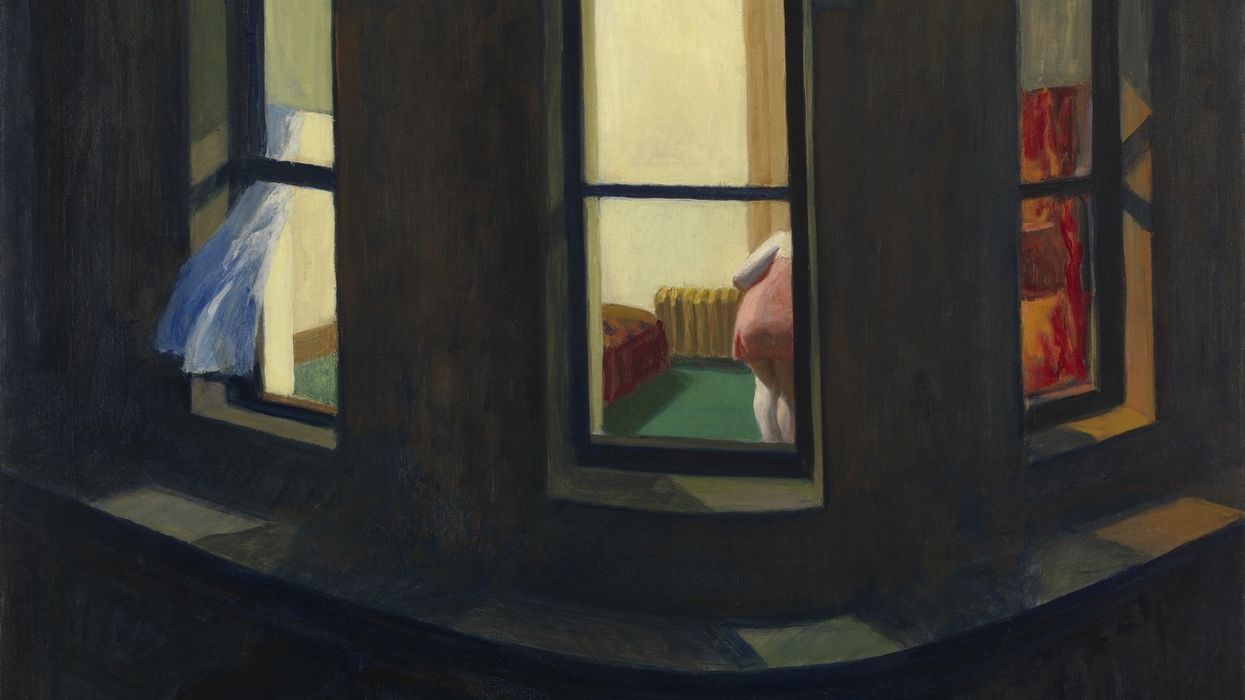How Did These Epic Paintings Inspire Hitchcock's 'Rear Window'?
Filmmakers gather inspiration from all over the place. Alfred Hitchcock liked paintings and short stories.

Who are the artists that inspire your work? Who are the creators that draw or paint things that get you excited? When I have writers' block, I like to wander a museum to get inspired. I think there's a lot of merit in writing the stories behind the paintings you see.
Alfred Hitchcock liked to study people. He was always looking for the most human emotion he could use to get the audience to identify with the character. One of his favorite places to look was in art. He'd page through evocative images and see if he could add them into his plans for movies.
For Rear Window, it appears that he channeled images from Edward Hopper paintings exclusively. In a recent Tweetstorm from writer Diane Doniol-Valcroze, she pointed out the direct connection between Hitchcock and Hopper's works.
She's not the first person to make the comparison, but it is interesting to see it come back into the light, so to speak. Hopper is a favorite among filmmakers, especially Hitchcock and even David Lynch.
He was favored not only because of the voyeuristic style but because of the way he used naturalistic light. He often found ways to keep his characters in the paintings emotive and to get us to force our own backstories on them.
Rear Window was written by John Michael Hayes, who based it on Cornell Woolrich’s 1942 short story, "It Had to be Murder." But it was easy to see that what Hitchcock saw in the story reflected what he liked about Hopper's paintings.
It's a short story about a man immobilized in his apartment, observing the minutiae of life through his window. Most of Hal Jeffries' daily observations run to the mundane until he plays back certain events in his mind and realizes that they point to the murder of one of his neighbors.
You can see the paranoia and fear taking over the character as things come together. And you can see that the story made an ideal movie.
Check out the Rear Window script here.
In his famous conversation with François Truffaut, Hitchcock said, “I’ll bet you that nine out of ten people, if they see a woman across the courtyard undressing for bed, or even a man puttering around in his room, will stay and look; no one turns away and says, ‘It’s none of my business.’ They could pull down their blinds, but they never do; they stand there and look out.”
This sort of sums up how Hitch focused on the images in Rear Window. We feel guilty watching these people. And we almost feel guilty for catching them murdering people as well. It's none of our business, and then it becomes our business.
Sort of like how it feels looking at Hopper's paintings.

When you look at the images above, what do you see? In an article for Hero Magazine, Finn Blythe wrote, "For Hitchcock in particular, Hopper’s gaze was like a petri dish from which an infinite number of possible narratives could grow. Evidence of Hopper’s influence can be found throughout Hitchcock’s oeuvre, but especially his 1954 classic Rear Window. Just as the power of Hopper’s paintings lies in what he chooses to exclude, so the tension and spectacle in Hitchcock’s Rear Window relies on what is obscured or unseen. Compare for example, the parallels between Hopper’s 1928 painting Night Window and the film’s character of Miss Lonelyhearts. Both frame solitary, partially nude woman within the privacy of their own bedrooms. Both carry a sense of intrusion, and perhaps more importantly, a prevailing sense of isolation in spite of their dense urban surroundings."
This captures it all in a way I could never say, so I am thankful these words exist. What Hitchcock did was take the ethos from the paintings and transcribe them into cinema. He understood how art could connect across mediums. He knew that the short story, these paintings, and his films could all live on the same line.
They are connected by how we choose to see the world. And each of them helps bring context to one another. There's a deeper way to look at Hopper's paintings now. Not just as a way to explore ourselves but a way to explore Hitchcock as well. The same goes for reading Woolrich's short story.
All of this art stood on its own, but it can also stand together. And Hitchcock made sure it did. When he adapted the story, he made sure to include that Jefferies lived in Greenwich Village. That's where Hopper was from, and where his series of paintings was inspired.
Art exists in our world to stand on its own and to collide with one another. We can take inspiration and appreciation for everything seen.
Let me know what you think of all this in the comments.












